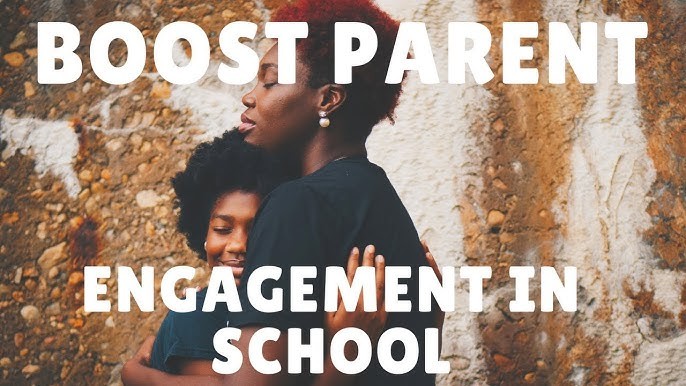Improving parent involvement in a child’s education is a critical factor for student success, school community strength, and overall positive development. When parents and educators collaborate effectively, students benefit from a more consistent and supportive learning environment, bridging the gap between home and school. However, achieving meaningful parent involvement isn’t always straightforward; it requires proactive strategies, open communication, and a genuine commitment from schools to build strong, reciprocal relationships with families. It’s about creating an atmosphere where parents feel welcomed, valued, and empowered to contribute to their child’s educational journey.
### Building Welcoming and Inclusive Environments
One of the foundational steps to improving parent involvement is creating a **welcoming and inclusive school environment**. For many parents, school can be an intimidating place, perhaps reminiscent of their own challenging educational experiences or simply an unfamiliar institution. Schools must actively work to dismantle these barriers by ensuring that the physical space feels inviting and that communication is accessible to all. This might involve multilingual signage, accessible facilities, and a friendly, approachable front office staff. Beyond the physical, the school’s culture should convey that parents are partners, not just occasional visitors or problem-solvers.
This inclusiveness also extends to acknowledging and respecting the diverse backgrounds, cultures, and family structures within the school community. Understanding that parent involvement looks different for every family—some may not be able to volunteer during school hours but can support learning at home—is crucial. Offering a variety of ways for parents to participate, and communicating these options clearly, can help ensure that all families feel they have a place and a role. For instance, creating a “parent resource center” with educational materials or holding workshops at varying times can accommodate different schedules and needs.
—
### Enhancing Communication Channels
Effective and consistent **communication** is the lifeblood of strong parent-school partnerships. Many misunderstandings and feelings of exclusion stem from a lack of clear, timely, and accessible information. Relying solely on traditional paper notices or sporadic phone calls is often insufficient in today’s fast-paced world. Schools should adopt a multi-faceted communication strategy, utilizing various channels to ensure messages reach all families. This could include school-wide newsletters, dedicated communication apps (like ClassDojo or Remind), school websites, social media groups, and personalized emails.
Crucially, communication should be a two-way street. Teachers and school staff should actively solicit parent input and feedback, creating opportunities for genuine dialogue rather than just information dissemination. Simple check-ins, asking parents what they’d like to know or how the school can better support them, can go a long way. Furthermore, offering communication in multiple languages and providing interpreters when needed demonstrates a commitment to truly reaching every family, fostering a sense of belonging and reducing communication barriers that can inadvertently exclude non-English speaking parents.
—
### Providing Practical Opportunities for Engagement
While a welcoming environment and clear communication are foundational, parents need **tangible and practical opportunities for engagement** that align with their availability and interests. Not every parent can join the PTA or volunteer in the classroom weekly, but many would appreciate other avenues for contribution. Schools can offer flexible volunteer roles that can be completed remotely or on weekends, such as preparing materials at home, translating documents, or contributing to school events.
Beyond traditional volunteering, schools can focus on empowering parents to support learning at home. Workshops on topics like “How to support reading at home,” “Understanding the new math curriculum,” or “Navigating online learning tools” can equip parents with the knowledge and confidence to engage in their child’s academic life. These sessions should be practical, offer actionable strategies, and be sensitive to varying levels of parental literacy or prior educational experience. Even simple ideas, like sending home weekly learning objectives or providing conversation starters related to classroom topics, can encourage meaningful parent involvement in daily learning.
—
### Building Relationships and Trust
Ultimately, improving parent involvement boils down to **building genuine relationships and trust** between families and the school community. This goes beyond formal meetings and extends to informal interactions that foster connection. Teachers can make an effort to connect with each parent early in the school year, perhaps with a positive phone call about their child or a friendly email introducing themselves. Regular positive communication, not just when there’s a problem, can significantly strengthen these bonds.
Schools can also organize community-building events that are not solely academic, such as family fun nights, cultural celebrations, or school-wide picnics. These events provide relaxed settings for parents to meet teachers, other parents, and school administrators, fostering a sense of community and shared purpose. When parents feel known and respected by school staff, they are far more likely to engage and collaborate, even when challenges arise. This investment in relationships creates a foundation of mutual respect and shared responsibility for student success, transforming parent involvement from a lofty goal into a vibrant reality. It acknowledges that education is a collective endeavor, and when parents and schools work hand-in-hand, the potential for student growth is truly limitless.





